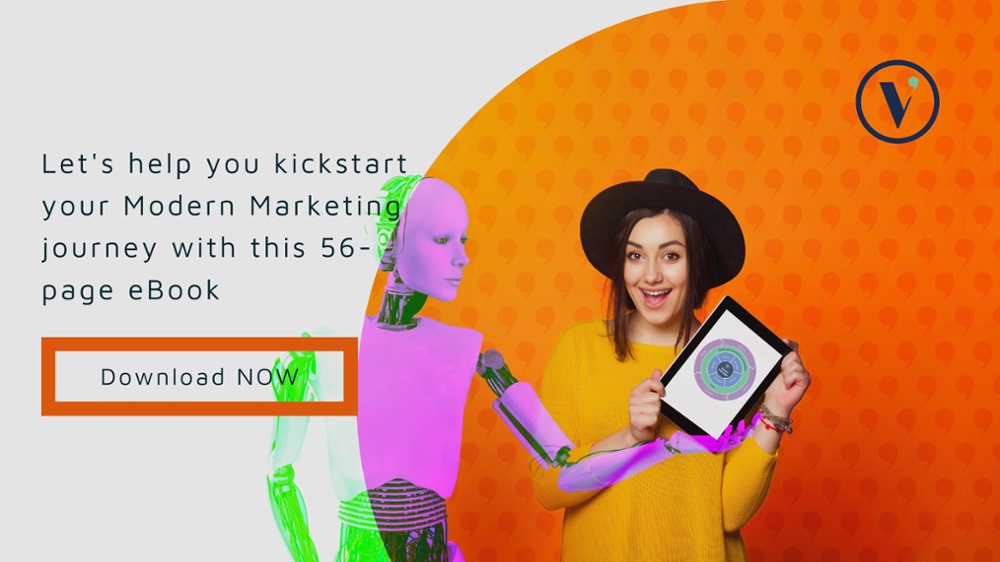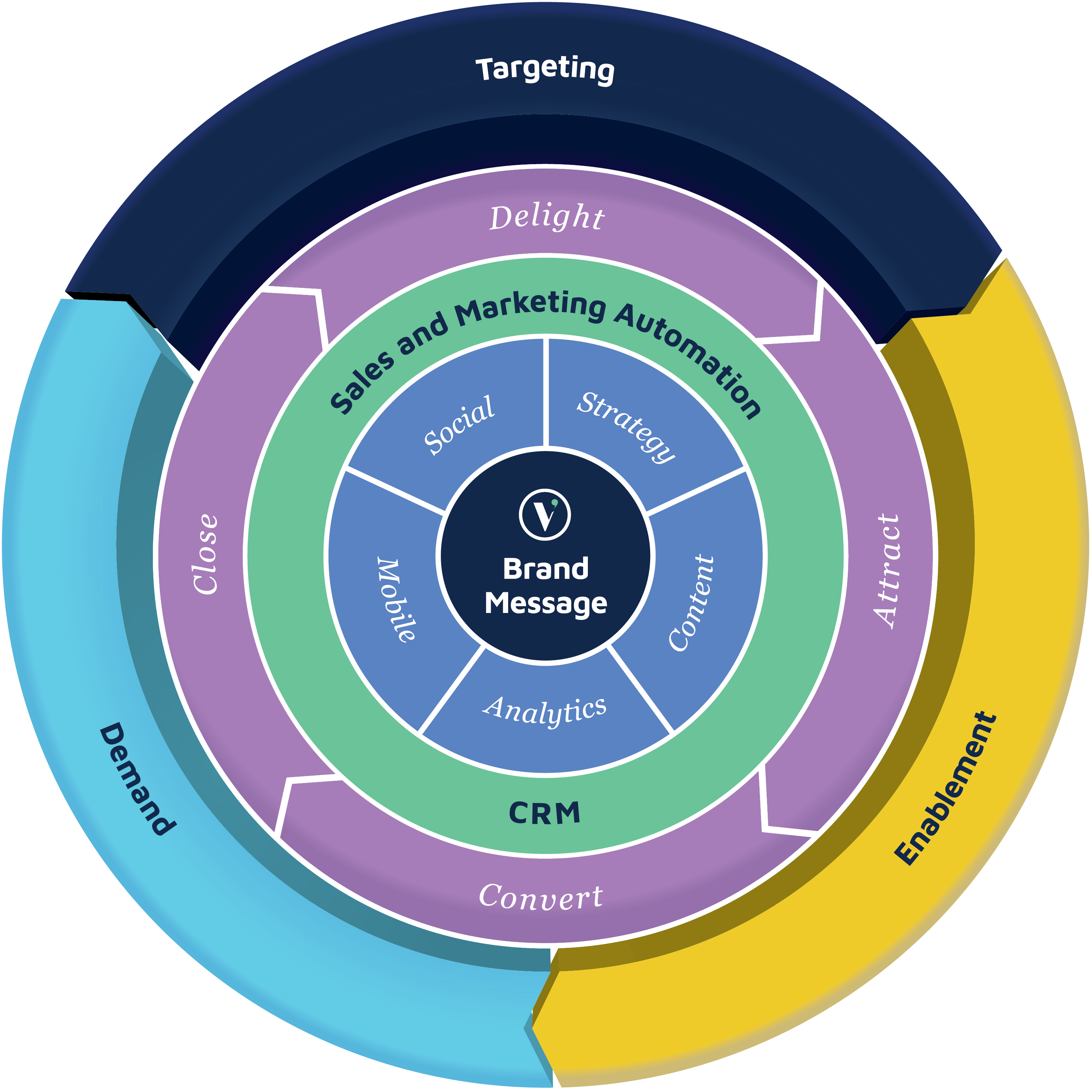8 tips to shape your Brand
 Veronica Lind
·
11 minute read
Veronica Lind
·
11 minute read
Here's 8 tips to Shape your Brand
The NEW Branding Guide for the Modern Business
The brand is important for any business. This is because in the eyes of the customer, the brand is the entity that distinguishes the organisation or product from its rivals on the market.
As a Forbes contributor Anjali Chugh writes:
“By not paying attention to creating a brand and creating an awareness around that brand, you are unknowingly depriving your business of the highest potential it can reach.”
Your brand experience is a living asset that differentiates your business.
Therefore, your brand is a living business asset that can provide security for future earnings. In the past, if you have the best customer service or the most efficient operations or the best product and services - you win. The combination of those three elements becomes your customer experience but that experience is now experienced by not only customers, but employees, the community and all other key stakeholders. That experience is the BRAND EXPERIENCE that differentiates your business.
Modern Marketing plays a big role in creating brand experiences throughout the entire lifecycle of the customer, therefore it is vital to work with HR, Sales, Product Development, Customer Support, IT to develop and drive an engaging brand experience where customers can visualise how they can work with you to achieve value. There are more humans in a B2B environment - from end users to CEOs, therefore relationships go deeper. The human factor is important in a B2B brand experience.
At Vermilion Pinstripes, we advocate that modern marketers need to focus on their most attractive prospects and customers – consider their goals and aspirations, understand their needs, wants and desires, and look for the ways to make that emotional connection with them.
We have 8 tips for you on Shaping Your Brand:
1) The Human Connection: Love
Love is Timeless.
Marketing and Communications professionals juggling with statistics and campaigns need to stop and assess whether they are reaching out to more customers or the right clientele. When marketing is seen as a set of procedures to generate profits, the human element is lost. There is no connection.
Are you just a sales process oriented organisation driven by revenue - merely transactional, online or offline? Believe it or not, love is the missing ingredient that is needed to propel business to another level. Love involves connecting with customers on a very personal level and a readiness to get emotional.
When a brand demonstrates love, it demonstrates care. Love helps any business stay open, ready and available - ALWAYS!
Our client, TG’s Child Care is a perfect example of how they radiate love by deeply involving the children, families, educators and community.The TG’s business sustainability model looks at how it impacts the environment, social and economy of where they are located. That means early childhood education is about laying a sound intellectual, psychological, emotional, social and physical foundation for development and lifelong learning. It has an enormous potential in fostering values, attitudes, skills and behaviours that support sustainable development.TG’s purpose is not about getting bums on seats. TG's see themselves as the stewardship of children’s future.
At Vermilion Pinstripes we like to bring in the various elements of mathematics, science, creativity and of course psychology to help businesses understand themselves and succeed in reaching out to their customers. Psychology plays a big part in shaping your brand – at the end of the day, we are humans reaching out to humans. Getting to the core of their emotions and getting a hook on it will make a significant change to how successful your brand becomes. And that is exactly what we did at TG's Child Care.
We created a 5-strategic step framework to guide brands to a valuable and long term commitment from customers, resulting in revenue generation. We call it the Modern Marketing and Communications Framework where you can start anywhere from Strategy, Content, Analytics, Mobile and Social. This is brand-led because what you want to say to each select segment of your customer is key to creating an effective, personalised customer engagement. Read more about how love can make a difference in improving your business.
2) Give Your Brand Personality
As your brand creates an emotional connection with your customers, it will in turn build trust and brand loyalty, bond them to you and make them want to return. Your brand needs to be associated with a specific set of human characteristics which your customers can identify with. This personality is what drives your identity and as you grow and evolve, so does your brand.
According to a study (Ronald E. Goldsmith Research Study), having human-like characteristics adds to the authenticity of your company. This in turn increases brand engagement. Your brand personality influences user experience and helps to make you stand out from the crowd.
To move from a merely cold, transactional, robotic relationship with your customers, you may want to think about connecting with them on a deeper level.
The most important question you want to ask is - What is the purpose of your brand?
Then ask, what feelings do you want to evoke in your customers when they think about your brand? What value are you giving to them? You would want customers to remember you and for positive reasons. These kinds of meaningful interactions with customers are what retains them and makes them loyal to you.
Shaping your brand is probably one of the most playful parts of your marketing process. See it as an exploration of your personality. Your brand is closely tied to your personality and over time they should evolve together. Best to start simple and then keep testing and experimenting and play around with iterations.
With time your brand will become more targeted and focused. To help you get started, we really love this simple and clear example of 5 main personalities and their related traits. There are real-life examples for you to see how these traits influence design decisions. Everything, from the colours, to the types of buttons, the font you choose etc. are all factors that influence how customers perceive your brand. This is an example of using psychology in a smart way to get your customers to notice your brand, identify with you and stay with you.
3) Brainstorm about Branding
This may all sound overwhelming or it's something B2B marketers would rather sweep under the rug to their design team or agency. All you need is run through a couple of questions to understand what your personality is and how to convert that into your brand identity.
Get ready to brainstorm with your marketing and sales colleagues!
-
Why are you doing this (for the business)?
-
What are the important values to your company?
-
Imagine your brand as a person whom you're meeting at a dinner event. What personality traits would he/she have?
-
What three words would you use to describe your brand?
-
What do you do better than anyone else?
-
What makes you different from your competitors?
-
If your brand were a person, how would it communicate?
-
What three words would you want your customers to use to describe you?
If you want more guidance on this, check out this branding workbook from Pricewaterhouse Coopers. It is a great way to start thinking about branding and can be used for personal branding or other types of business models.
4) Reviewing Your Brand Guide
After the brainstorming, you would have a clearer idea of the brand identity. Let’s check that against your current brand guide. This serves two key purposes: Firstly, it helps you to “rediscover” your company or product brand that you had overlooked, and secondly, it will help you to identify gaps so that you can move forward to make the right adjustments.
1. Typography and Colour
The font and colour speak volumes of the brand’s personality and influence people’s perception of your values.
Is your brand typography a classic Serif font? That would give the impression that your brand is contemporary and reliable. If it’s a Script typography, it would give the brand an air of elegance and luxury. Or is it a Display font? That is all about being bold, eclectic and ever-ready to stand out from the crowd!
With colours, there is an underlying play on emotions. Some of the impressions and influences colours have on customers’ perception include:
-
Red – Passion and Excitement. For brands that are loud, young and full of excitement.
-
Orange – High energy and playful. For brands that want to stand out.
-
Yellow – Happiness and Fun. For brands aimed at wider public as it is full of cheer and positivity.
-
Blue – Trustworthy and Executive. Probably the most universally appealing colour as it is associated with reliability and professionalism.
-
Purple – Luxury. This is a brand that wants to be seen as unique and exotic.
-
Pink – Femininity. For brands that offer a touch of feminine comfort.
-
Brown – Rugged and Masculine. Not a commonly used colour but it brings forth values of trust, reliability and ruggedness. (Hint: Brands that use brown are UPS, Nespresso and Hershey’s).
-
Black – Modern and Sophisticated. A true classic. Period.
Here's an interesting read - Branding colours: everything you need to choose your brand’s perfect pigments.
5) Your Brand's Unique Voice
Besides looking the part, the brand’s voice has to be right, too. Using the brand’s unique voice, B2B marketers then need to communicate the brand's messages across a vast spectrum of channels e.g. website, social media, email, ebooks etc. The brand’s voice must be consistent and appropriate for your brand’s personality in order to communicate effectively.
Here are a set of steps to help you get started on shaping your brand's voice for your target audience.
Step 1 : Arrow in on Your Basic Values
-
Write down words or ideas your business stands for.
-
Write down key messages your business represents.
-
If you are stumped for words, ask colleagues to give you ideas. Ask them to give you words that they associate (or not) with your business. Ask where they got these ideas from or what sparked off these impressions.
Step 2 : Focus on Vocabulary
-
Decide if the language used in your brand is formal or informal and to what degree. Think about your target audience and how they speak.
-
If your target audience were in front of you right now, how would you speak to them? What style of language would you adopt?
-
Analyse the words and descriptions your customers use when talking about your business. This will give you information about what ideas or values they already associate with your brand.
-
Avoid technical jargon as this can be alienating and off-putting to customers, unless you are referring to a highly niche area. A term that can be understood by 95% of your audience does not need simplification.
Step 3 : Laughter is Good Medicine
-
Humour can add personality to a brand and give it an extra boost of energy. Decide if humour is appropriate to your brand and what style of humour is suitable.
-
Laugh at yourself, never at others.
-
Use subtler forms of humour so it is not forced.
-
If the humour cannot be easily understood or may obscure meaning, drop it.
Step 4 : Announce to Everyone
-
Everyone who works in your business needs to know about the voice you have adopted for your brand.
-
Make it consistent across departments by creating a tone of voice guide.
-
Write this guide in the tone itself, include words or phrases that are appropriate or in line with the voice and show examples of copy for different mediums.
-
Appoint someone to be in charge of making sure the tone of voice is kept consistent across all relevant copy.
-
Check out this blog for more details about how you can sharpen your brand messages.
6) Listen, I’ve done all that but it’s still not working…!
We hear you. As an experienced marketer, you know the drill about branding. Yet, having spent much time and effort, you’re not getting the results or progressing to where you want to be.
Let’s examine a few common situations:
-
Customers are saying that your brand or products are expensive.
-
Your marketing campaigns are not attracting the right audiences.
-
Despite what customers say about your product or service pricing, your company has been investing in better quality products or services, and continue to believe that your products or services deserve to command a premium price.
-
Your company has not fulfilled its brand promise to customers.
This sounds like a broken business model syndrome.
We believe that there is a special formula to help businesses understand why they are not where they believe they should be, AND how to address that challenge.

Creating A Great Brand Experience From Within
Marketing and Communications Professionals have the ability to influence, drive and manage across the different pillars of the company – from products and services to operations to services delivery -- to ensure that the customers enjoy the best brand experience.
Within the organisation, we need everyone to have a human-centric mindset.
Learn more about how to work from within your organisation to ensure that customers gain the best brand experience.
Book a free 30-minute consultation with us if you feel you are doing all you can but nothing seems to be working for your business. We can guide you to gain more clarity and analyse what specific steps you can take to push the right buttons to achieve your business goals.
7) Deliver Brand Message With Content
It is imperative to deliver your brand’s messages in the right manner with the most appropriate content so as to establish and maintain the emotional connection with customers and veer them towards making a decisive choice for your brand. Content is a big thing in the future of marketing.
Content is key to elevating your brand and it can effectively motivate customers to move to their next stage of their purchasing journey faster than they would on their own.Remember: Content doesn’t just help marketing. It can enable your sales team and be beneficial to recruiting, investor communications, internal training and just above every other area of your business too.
Marketing plays an important role here as it is capable of engineering the customer’s journey – to entice, guide and provide relevant information to steer them to a decision in favour of your brand.
Content – also known as the “meaty” part - is the element that will help to deliver your brand's message. Your marketing and communications colleagues have to create a content-driven ecosystem. According to PQ Media's Global Content Marketing Forecast 2015-19, content marketing will be a $300B industry. You need fantastic content to differentiate your brand from your competitors. The common problem for many businesses now is that content is being created and distributed in silos from different business units and marketing channels. This lack of consistency creates confusion in the market place and does not reach out to customers effectively.
B2B marketers need to align content to business objectives.
We have come up with three key steps to building a content-driven ecosystem.
-
Create and manage content providing a personalised experience for customers.
-
Publish and promote relevant content across the right channels and social integrations.
-
Use analytics to convert KPI to ROI.
8) Get Social
Studies show that 85% of consumers say that they will change their buying behaviour in response to social media content. Researchers at the Australian Psychological Society (APS) did a poll of 1834 adults and found that ¨online social networking increases, rather than reduces, face-to-face socialising¨.
Social media is undeniably one channel that will bring massive returns when applied correctly. Social media can be extended to the entire lifecycle of the customer. In our article on Getting The Best Out Of Customer Life Cycle With Social Media we demonstrate how we help our brands move customers from each stage of the life cycle, from brand awareness to demand generation and onward to sales enablement, customer support and even customer advocacy.
Social media is where you can extensively share your brand values. Create brand visibility by matching your brand with its values. Your brand's voice will draw people into wanting to identify with you. Choose influencers who share your values and are aligned with your voice in order to make them your allies.
This is where you can consolidate relationships by sharing common values between your customers and your brand. Check out our blog for more tips on how to make social media work for you.
Briefly, here are five brand-shaping strategies that dominate social media:
-
Tell a (Visual) Story – use the right words, photos and videos to speak with your audiences. Images and videos are critical elements to showcase your brand's purpose and connect with your audience. The human brain can process visuals up to 60,000 times faster than text. Tweets with images, for example, receive up to 5x times the engagement of those without. Articles with visuals receive 94 percent more views. One of the photographer and videographer we work with says - "That's why they say a picture says a thousand words. If the image and video is right, text doesn't matter. The customer feels the emotion the brand wishes to evoke just by looking at the image or video. It sells itself. This is only possible when you work closely with the team at Vermilion Pinstripes to position how your story should be told through every image, every video." - Stuart Lyall.
-
Increase Personalisation – understand your customers’ habits through data analysis, and tailor your messages to what they need, want or desire at different stages of their purchasing cycle with you.
-
Cash in on Facebook, Instagram and LinkedIn – Instagram is a powerful branding medium that you can use with interesting and fun content that is quick, up-to-date and constantly evolving. B2B companies may find LinkedIn a more appealing professional branding channel. Facebook has become a powerful sales tool. Integrate your products, services, online shop and drive interests, offers through it.
-
Integrated online presence – apply a holistic approach to your online promotion across your website, social media and mobile platforms.
-
Embody your Brand – emphasise your brand profile and business accomplishments and share them on social media. Sometimes, personal branding will work great to help brands create that emotional connection with their customers. Check out more at why personal branding plays a key role in modern branding
My Blue Tea uses social media particularly well to promote her brand messages and products. O ffers are tempting. All online channels are consistently executed and tightly integrated across blogs, emails, social media and Google My Business. Brand messages and content are powerful and consistent inspiring her followers who are hungry for recipes to use her unique superfood products.
Understanding human emotions is key to advancing your business.
Understand yourself well enough to create a brand personality and voice that is authentic and which your customers can identify with.
Understand your customers to know what content they want and what factors affect their thoughts and choices.
With a dash of love, creativity and data, marketers can work towards creating that happy business alongside your colleagues in sales, operations, etc.
Here's how you can make social media work for you.
Would you prefer to download our 56-page eBook on Modern Marketing for the Modern Business?
Book a 30-minute Free Consultation
Keep on making waves in the digital world! Our experts are ready to support you—schedule your free 30-minute consultation today.








